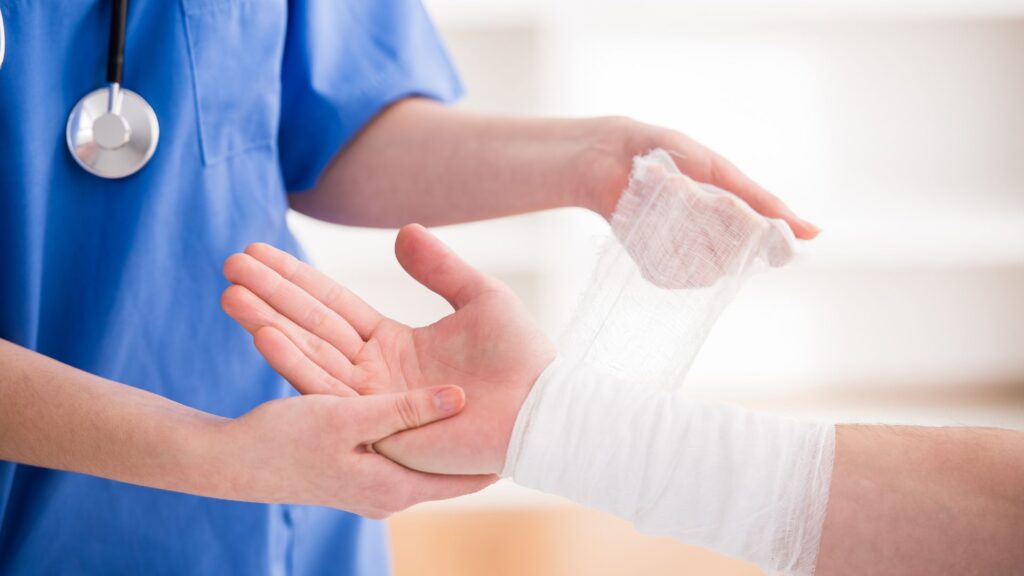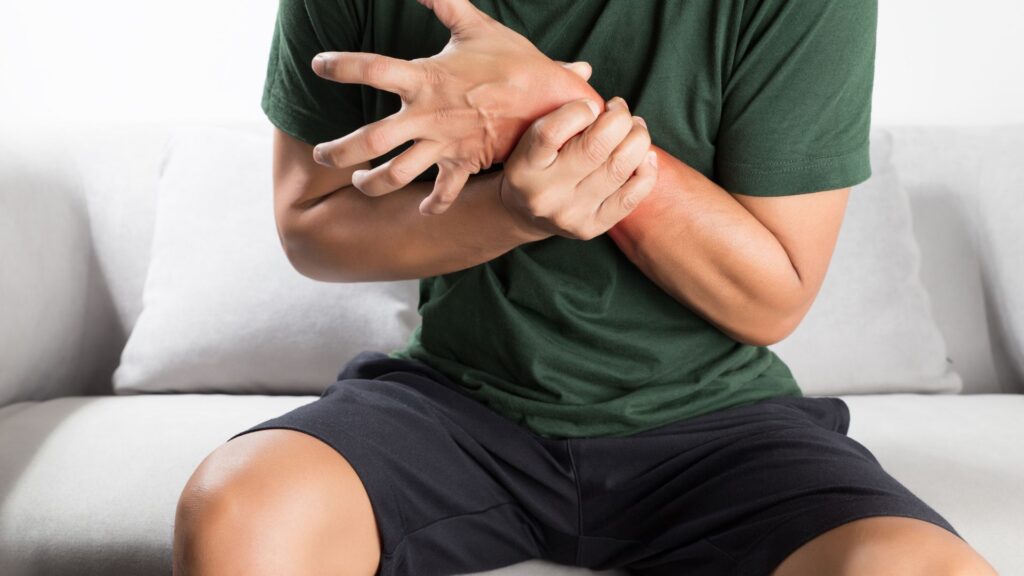About
Anatomy of the Hand and Wrist
The wrist is a complex joint composed of several bones and soft tissues. The wrist joint connects the forearm bones (radius and ulna) to the carpal bones (scaphoid, lunate, triquetrum, pisiform, trapezium, trapezoid, capitate, and hamate). These bones, along with ligaments and tendons, provide flexibility, stability, and strength to the hand and wrist.
Diagnosis
Mechanism of Wrist Injury
Wrist fractures typically occur when a person falls on an outstretched hand, causing a sudden impact on the wrist. This type of injury is known as a FOOSH (Fall Onto Outstretched Hand) injury. Other common causes include sports injuries, car accidents, and direct blows to the wrist. According to the American Academy of Orthopaedic Surgeons, wrist fractures are among the most common broken bones, affecting millions of people each year.
Types of Wrist Fractures
There are several types of fractures that can occur in the wrist, including:
- Distal Radius Fracture: This is the most common type of wrist fracture and occurs when the end of the radius bone (closest to the wrist) breaks. A Colles fracture is a specific type of distal radius fracture where the broken bone fragment tilts upwards.
- Scaphoid Fracture: This fracture occurs in the small scaphoid bone, one of the carpal bones. It is more challenging to diagnose and heal due to its unique blood supply.
- Ulnar Styloid Fracture: This type of fracture occurs when the ulnar styloid process, a small bony projection on the ulna, breaks.
- Carpal Bone Fractures: These fractures involve one or more of the carpal bones.
Treatment
Examination and X-ray
If you suspect a wrist fracture, a medical professional will perform a physical examination, assess the range of motion, and check for any deformity or tenderness. An x-ray is necessary to confirm the diagnosis and determine the type of fracture. In some cases, a CT scan may be required to provide more detailed information about the fractured bone and surrounding soft tissues.
Management and Complications
The treatment for a wrist fracture depends on the type, location, and severity of the fracture. Options include:- Immobilization: Casting or splinting the wrist to allow the bone to heal properly.
- Closed Reduction: This involves manipulating the fractured bone back into place without making an incision.
- External Fixation: In this procedure, pins are inserted into the bone through the skin and connected to an external frame to stabilize the fracture.
- Surgery: In severe cases, surgery may be required to realign the bones and insert plates, screws, or pins to hold the bones in place.
- Bone Graft: In cases where the bone is not healing properly, a bone graft may be necessary to promote healing.
Next Steps
How Urgent Care Brisbane Can Help
For patients with wrist fractures, Urgent Care Brisbane offers a comprehensive approach to managing the injury without the need for a hospital emergency visit. Here’s a step-by-step guide on how their services can help:
- On-site Radiology: Urgent Care Brisbane is equipped with on-site radiology services, allowing for a quick and accurate diagnosis of the wrist fracture.
- Closed Reduction: If the fracture is not severely displaced, a closed reduction can be performed at Urgent Care Brisbane. The medical professional will gently manipulate the fractured bone back into its proper position.
- Casting: Once the fractured bone is realigned, Urgent Care Brisbane offers both synthetic and traditional casting options to immobilize the wrist and allow for proper healing.
- Follow-up Care: Regular follow-up appointments are crucial for monitoring the healing process and addressing any complications that may arise. Urgent Care Brisbane provides convenient and accessible follow-up care for patients with wrist fractures.
- Physical Therapy: Once the bone has healed, it is essential to regain strength and range of motion in the wrist. Urgent Care Brisbane can refer patients to a qualified physical therapist to create a personalized rehabilitation program.
By choosing Urgent Care Brisbane, patients with wrist fractures can receive comprehensive, high-quality care without the long wait times and crowded environment of a hospital emergency room. Their team of experienced professionals is dedicated to helping you recover from your wrist injury and return to your daily activities as soon as possible.

In Summary, wrist fractures are a common injury that can result from various causes. Understanding the anatomy of the wrist, mechanisms of injury, types of fractures, and appropriate management is essential for a successful recovery.
By seeking prompt and appropriate treatment, patients can minimize the risk of long-term complications and regain their wrist function. If you or a loved one experiences a wrist fracture, consider the expert care offered by Urgent Care Brisbane, where you can receive the necessary treatment and follow-up care in a comfortable and efficient setting.

